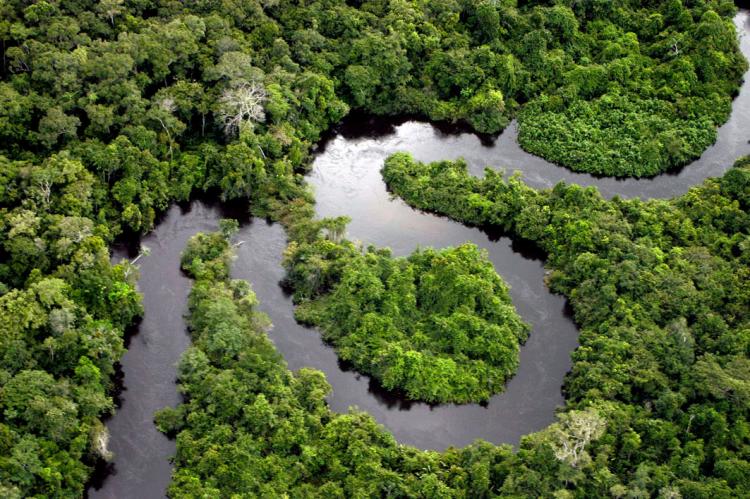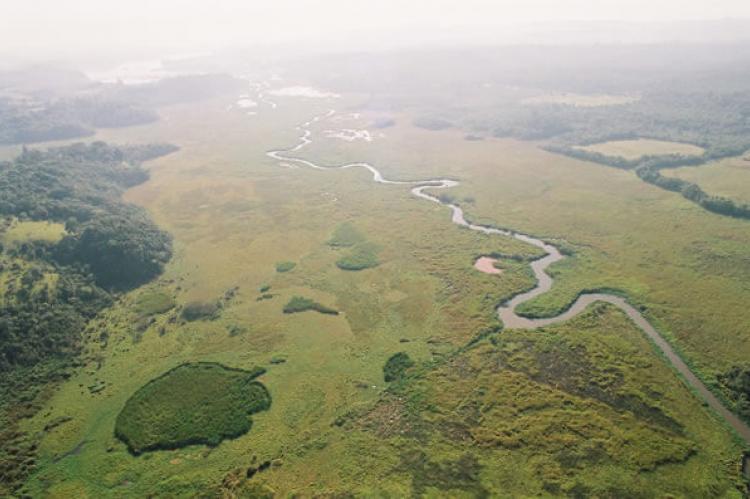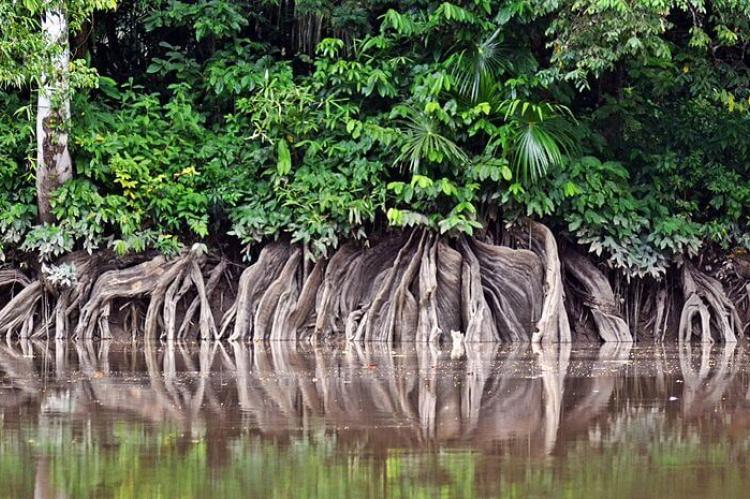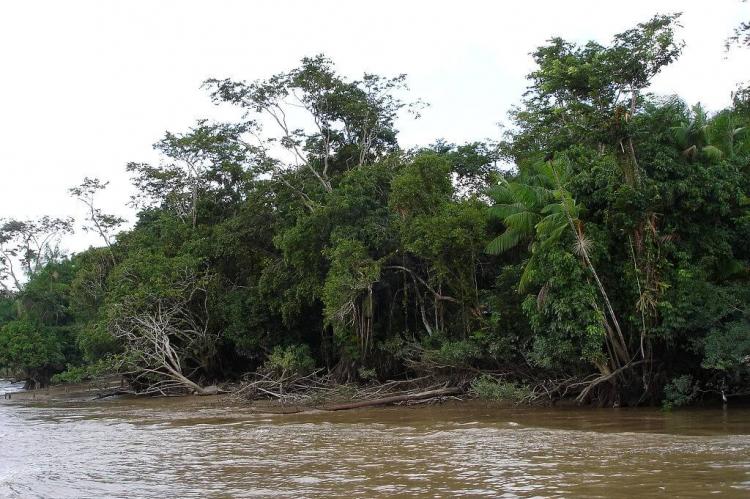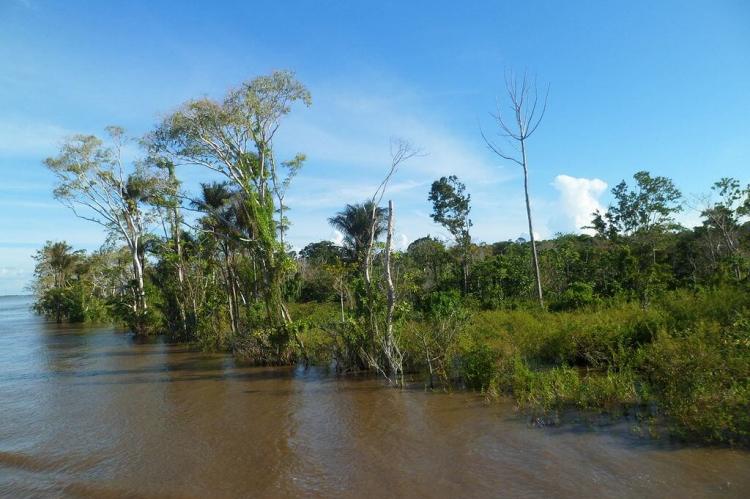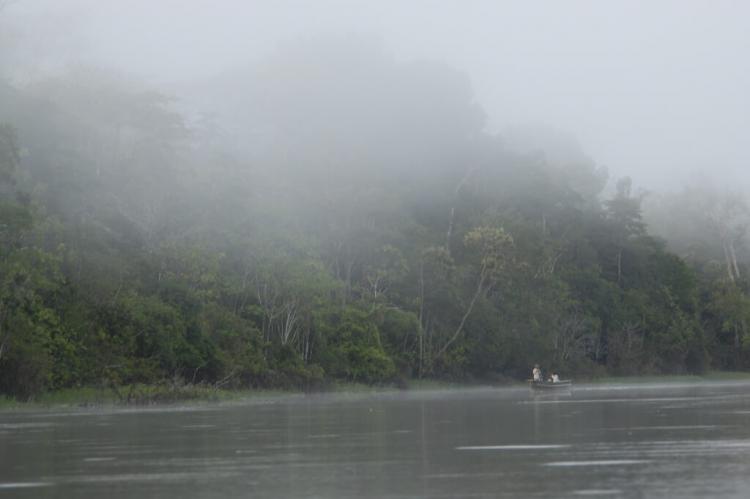Várzea Forests: Seasonal Floodplain Ecoregions (South America)
Várzeas are extensive lowland floodplain areas bordering the Amazon River and its tributaries. As a result, Várzea forests are subject to seasonal flooding and may also contain more open, seasonally flooded habitats such as grasslands, including floating meadows.
Várzea Forests: Seasonal Floodplain Ecoregions
Várzea forests within the Amazon biome represent a dynamic interplay of ecosystems along the Amazon River and its tributaries. These areas encompass more than traditional forests, including diverse habitats like grasslands and floating meadows.
Seasonal Flooding and Hydrological Patterns
Várzea ecosystems are shaped by the yearly rainfall cycles in the Amazon. Whitewater rivers lead to a notable rise in water levels during the rainy season, reaching heights of 10 to 15 meters (33 to 50 feet) and transforming the landscape.
Distinct Ecoregions
Várzea habitats vary across regions. Each region has its ecological characteristics, from the Iquitos várzea in the upper Amazon to the Purus várzea in the middle and the Monte Alegre and Gurupa várzea in the lower areas. The Marajó várzea, at the mouth of the Amazon, contends with freshwater and tidal influences.
Diverse Habitat Components
Várzea areas comprise a mix of ecosystems. While dense canopy forests cover about 75% of the landscape, the remaining 25% includes grasslands, lakes, flooded fields, and swamps. This diversity results from topographic variations influencing flooding durations and severity.
Productivity and Breeding Sites
Underlying the nutrient-rich waters, várzea forests play a crucial role as highly productive zones in Amazônia. The annual white water flooding replenishes soil nutrients, creating fertile grounds that serve as significant breeding sites for various species, including fish, birds, mammals, and reptiles.
Adaptations for Survival
Surviving the cyclical flooding and receding waters demands adaptations from resident flora and fauna. Plants and animals must exhibit various morphological, anatomical, physiological, and ethnological adjustments to cope with the changing environmental conditions.
Aquatic Advantage for Reproduction
The flooding season offers a strategic advantage for aquatic organisms. With reduced predator density due to migration or confinement to smaller, drier areas, fish and other water-dwelling species capitalize on this period for reproductive activities.
In summary, várzea forests exemplify the pragmatic responses of ecosystems to seasonal shifts in the Amazon. Beyond the grandeur, these areas showcase the intricate balance between water and land, vital in sustaining diverse life forms in the region.
Iquitos Várzea
The Iquitos várzea is a distinctive ecoregion characterized by flooded forests lining the rivers in Brazil, Peru, and Bolivia, situated west of the Amazon biome. The forest experiences seasonal flooding, reaching heights of up to 7 meters (23 feet), courtesy of whitewater rivers carrying nutrient-rich sediment from the Andes.
The meandering rivers contribute to a dynamic and ever-changing landscape. Oxbow lakes, marshes, levees, and bars intermingle with grasslands, shrubs, and forests in various stages of succession. During extended flood periods, fish venture into the woods, driven by the quest for fruit amidst the submerged terrain.
Navigable rivers crisscrossing the region make the forest accessible, but this accessibility has also exposed the area to extensive deforestation. Timber extraction and the creation of pastures for livestock have left their mark on this ecologically sensitive region.
Encompassing the low, seasonally inundated river basins of the upper Amazon, Ucayali, Marañon, and Madre de Dios in Peru and Bolivia, this ecoregion includes several smaller tributaries to the Amazon in Peru, along with the upper Juruá and Purus rivers in Brazil.
Most of the Iquitos várzea revolves around the expansive seasonally flooded plain in northeastern Peru, where the Marañon and Ucayali Rivers converge to form the Amazon. The Pacaya and Simiria rivers cut through this plain, creating a diverse and intricate landscape.
Iquitos, a major urban center, sits at an elevation of 100 meters (328 feet). The overall topography is characterized by flat terrain with micro-undulations resulting from the meandering course of the rivers.
The Iquitos Varzea is not merely a snapshot of seasonal inundation but a nuanced interplay of water dynamics, landscape complexity, and human impact. As accessibility and deforestation pose challenges, the delicate balance of this ecoregion underscores the importance of sustainable practices to preserve its ecological integrity.
Flora and Fauna
Within the Iquitos Varzea ecoregion, characteristic trees such as the buriti palm and Jessenia batuaua define the landscape. Along the water's edge, shrubs bearing the camu-camu fruit thrive amidst seasonal flooding. The understory is adorned with the dominance of Heliconia and ginger, accompanied by the presence of palms and epiphytes.
This ecoregion is a haven for over 225 mammalian species, showcasing the richness of its aquatic and terrestrial habitats. Marine wonders like the boto, manatee, and giant otter find their home here. Other noteworthy mammals include Goeldi's marmosets, Andean night monkeys, monk sakis, spiny rats, and a minimum of four opossum species.
The Iquitos Varzea hosts a staggering 624 bird species, making it an integral part of the Upper Amazon-Napo lowlands Endemic Bird Area. Within this avian tapestry, nine species stand out as endemic restricted-range birds, featuring unique inhabitants such as the Cocha antshrike, black-tailed antbird, and white-masked antbird.
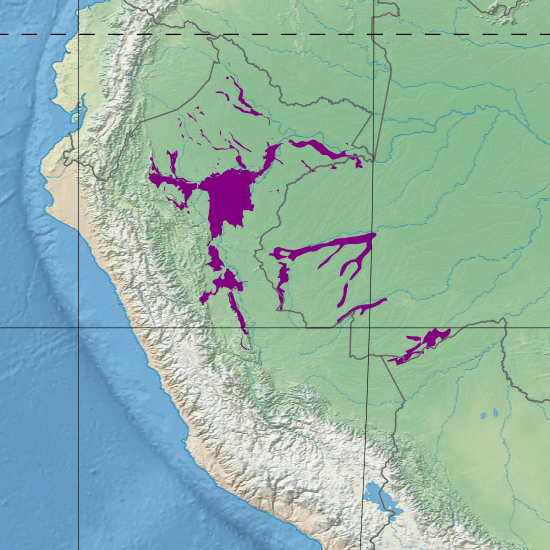
Map depicting the location of the Iquitos várzea (in purple)
Purus Várzea
The Purus Varzea represents a region of flooded forests situated in the central part of the Amazon Basin. This area is characterized by vegetation that has adapted to endure floods of up to 12 meters (39 feet), persisting for about eight months.
Though mammal diversity is relatively lower, the ecosystem harbors various fish and bird species. Ground-dwelling mammals often migrate to higher ground during the flood season to cope with the inundation.
The Purus Varzea faces multiple threats, including logging, cattle farming, over-fishing, and mercury pollution from gold mining. These human-induced pressures challenge the region's ecological balance, necessitating conservation efforts.
Flora and Fauna
The avifauna is notable, boasting over six hundred and thirty bird species—however, the habitat's frequent flooding influences the diversity of terrestrial mammals, which is comparatively more minor. Two narrow endemic primates, the white uakari monkeys (Cacajao calvus calvus) and blackish squirrel monkeys (Saimiri vanzolinii) inhabit this region. The largest snake globally, the great anaconda (Eunectes murinus), also finds its home here.
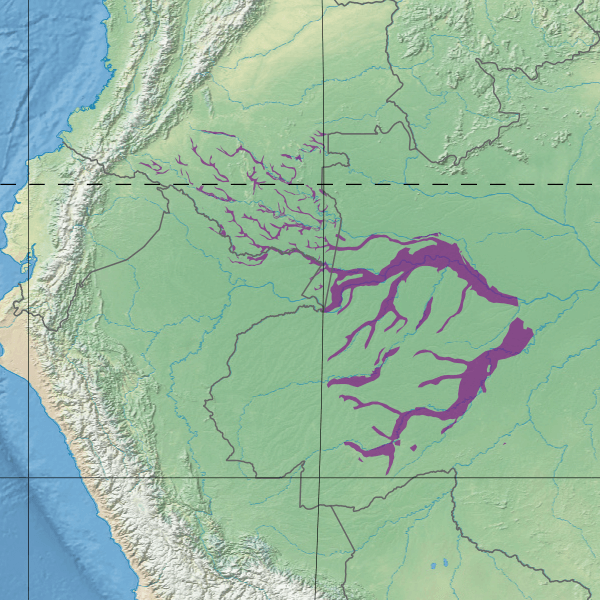
Map depicting the location of the Purus várzea (in purple)
Monte Alegre Várzea
The Monte Alegre várzea is a distinctive ecological region characterized by seasonal flooding in the lower Amazon basin. Located in Brazil, this várzea extends along the Amazon River and its tributaries, contributing to the intricate mosaic of landscapes that define the Amazonian biome.
This várzea is situated downstream along the Amazon River, encompassing portions of the lower basin. It is part of the broader Amazon biome, renowned for its unparalleled biodiversity and unique ecological dynamics.
The defining feature of the Monte Alegre várzea is its seasonal flooding. The region experiences a cyclical rise and fall of water levels, influenced by the annual rainy and dry seasons. During the wet season, water levels can surge significantly, transforming the landscape into a vast flooded area expanse.
The Monte Alegre várzea is a diverse habitat comprising flooded forests and open areas such as grasslands and meadows that become inundated during the wet season. This ecosystem variety contributes to the overall richness of the region's flora.
Similar to other várzea ecosystems, the Monte Alegre várzea faces conservation challenges. Human activities, including deforestation, agriculture, and infrastructure development, threaten the delicate balance of this flooded ecosystem. Conservation efforts are crucial to ensure the sustained health of the Monte Alegre várzea and its unique biodiversity.
Flora and Fauna
Biodiversity is exceptionally high in this flooded forest along the lower Amazon. In terms of avifauna, there are 681 reported bird species, including red-shouldered macaws (Ara nobilis), sun parakeets (Aratinga solstitialis) and green-rumped parrotlets (Forpus passerinus). Over two hundred species of mammal are found here, including jaguars (Panthera onca), ocelots (Leopardus pardalis), tapirs (Tapirus terrestris), and several primate species.
The vegetation in this várzea showcases a mix of plant species adapted to periodic inundation. Trees with specialized root systems, aquatic vegetation, and adaptable understory plants contribute to the ecological tapestry. The seasonal flooding provides essential nutrients, making the Monte Alegre várzea a productive breeding ground for various species of fish, birds, mammals, and reptiles.
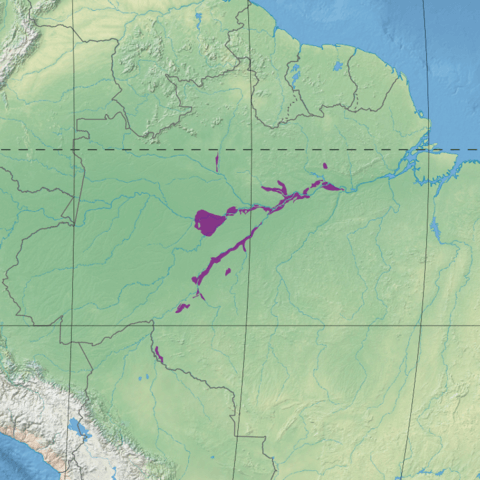
Map depicting the location of the Monte Alegre várzea (in purple)
Gurupa Várzea
The Gurupa várzea is a notable ecoregion within the Amazon biome, characterized by its lush forests' seasonal flooding along the Amazon River. The ecoregion draws its name from the Ilha Grande de Gurupá, an alluvial island located at the mouth of the Amazon.
Extending along the lower Amazon River from the Tapajós River mouth to the Xingu River mouth, the Gurupa várzea covers an expansive area totaling 984,195 hectares (2,432,000 acres). Positioned strategically between the Tapajós-Xingu moist forests to the south and the Uatuma-Trombetas moist forests to the north, it also neighbors the upstream Monte Alegre várzea and the downstream Marajó várzea along the Amazon.
The flooded forests of the Gurupa várzea showcase the remarkable adaptability of its resident species. During seasonal and tidal fluctuations, trees, grasses, and shrubs gracefully endure partial submersion underwater for extended periods, attesting to the resilience of the ecosystem.
In response to the cyclic floods, animals and fish exhibit synchronized movements to and from the area, capitalizing on the abundant fruits produced by the resilient trees. This dynamic interaction fosters diverse resident species within these tropical savannas, including notable inhabitants like the scaled spinetail.
The Gurupa várzea plays a crucial role within the larger Amazon biome, acting as a transitional zone between different moist forest ecoregions. Its position along the lower Amazon River makes it a vital hub for ecological processes, influencing the biodiversity and adaptability of the surrounding landscapes.
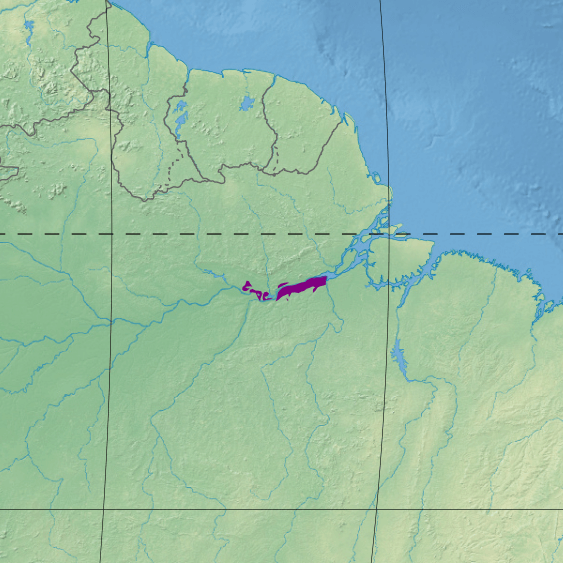
Map depicting the location of the Gurupa várzea (in purple)
Marajó Várzea
The Marajó várzea ecoregion unfolds as a distinctive landscape of sedimentary islands and floodplains at the Amazon River's mouth in eastern Brazil. This unique area experiences bi-daily flooding, courtesy of ocean tides pushing river waters onto the land, resulting in the proliferation of numerous islands across the region.
The ecoregion's flooded terrain is a vital habitat for diverse ecosystems, twice daily inundated by ocean tides. This constant ebb and flow creates a dynamic environment that supports fruit-eating fish, aquatic mammals, birds, and other fauna. The absence of protected areas places this region under imminent threat from activities such as cattle and water buffalo ranching, logging, and fruit plantations.
The Marajó Várzea is a natural reservoir for nutrient-rich soils carried downstream by the Amazon River. The twice-daily tidal flooding influences the region's topography and its ecological characteristics. Consequently, vegetation in this area tends to be shorter than the surrounding regions, with a lower diversity of plant species, while palms take center stage. However, the fauna diversity is notably richer, with avifauna standing out with around 540 species.
Despite its ecological significance, the Marajó Várzea faces considerable threats, primarily from human activities. Cattle and water buffalo ranching, coupled with large-scale commercial logging, pose imminent challenges to the ecological balance of this ecoregion. The absence of protected areas exacerbates these threats, necessitating urgent attention to safeguard the unique biodiversity within this tidal floodplain.
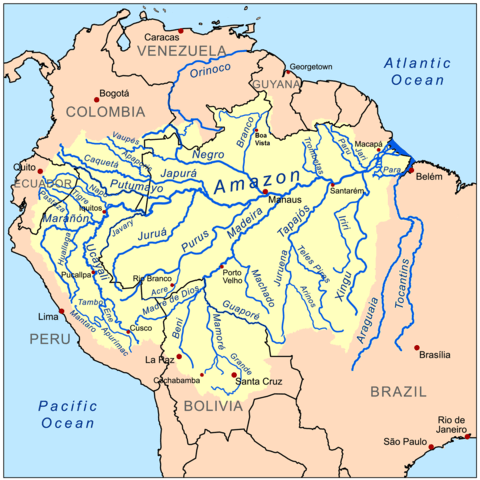
Map of the Amazon River Basin
